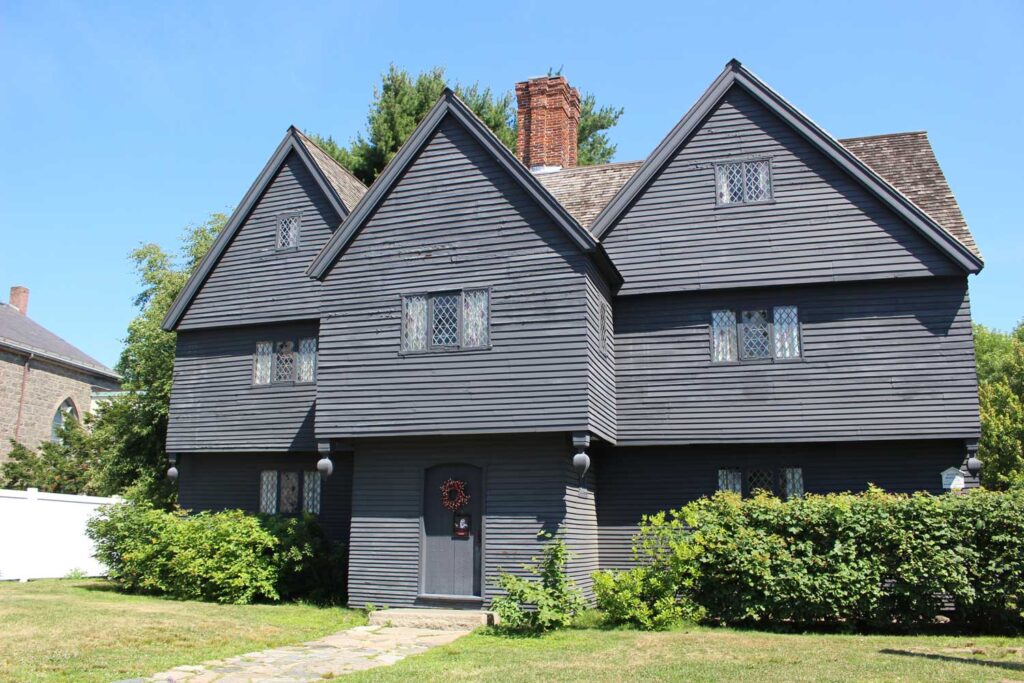Jonathan Corwin was a wealthy merchant from the New England Colonies who held much influence in Massachusetts Bay. He was also a politician but is best known as one of the magistrates who served on the court during the Salem Witch Trials.
He is often named alongside John Hathorne for their roles in the trials, specifically at the beginning stages.
Early Life
Jonathan Corwin was born on November 14, 1640, in Salem, a leading port town of the Massachusetts Bay Colony, one of five children born to George and Elizabeth (Herbert) Corwin. His father had arrived in Salem in 1638, and his mother was the daughter of Northampton mayor John Herbert.
His father was a wealthy merchant and shipbuilder in Salem, and Jonathan continued in the mercantile trade. He married Elizabeth Gibbs (née Sheaf), widow of Robert Gibbs, in 1675 and had ten children.
Corwin was also involved in public affairs. He was twice elected to the colonial assembly in 1682 and in 1689, and he was a stalwart supporter of the old regime when the Dominion of New England was established in 1686.
He was also an active magistrate of the local courts, hearing cases dealing with petty crimes and minor charges such as drunkenness and burglary.
Salem Witch Trials
As reports of witchcraft began to escalate around Salem, magistrates were called to make preliminary inquiries into the reports. Corwin and Hathorne began to hold hearings in March 1692 and took testimony from the first three women accused of being a witch: Tituba, Sarah Good, and Sarah Osborne.
Due to the uncertain constitutionality of the Massachusetts government in 1692 (its charter was vacated in 1684, and it had reformed with the charter following the 1689 Boston revolt that ended the Dominion rule of Sir Edmund Andros), there was a reluctance among colonial leaders to establish courts to hear the cases until Sir William Phips arrived in May 1692 with the charter that established the Province of Massachusetts Bay.
The accusations and arrests began to increase and fill the jails, and it became obvious that a court would need to be established. Sir William Phips then established the special Court of Oyer and Terminer to hear the cases that had accumulated.
Corwin was not initially assigned to the court, but when Nathaniel Saltonstall resigned in protest over the first hanging, Phips assigned Corwin to the panel.
Corwin signed several arrest warrants and transcribed a few of the hearings, but the scarcity of records from the 1692 events makes it impossible to determine Corwin's overall role in the trials as well as his attitude toward the acceptance in the court of spectral evidence, the idea that actions seen in visions could be an indicator of witchcraft.
The special court convicted nineteen of witchcraft and sentenced them to the gallows before it was disbanded in October 1692. The provincial court system was set up in January 1693, with the Superior Court of Judicature, the province's high court, hearing the remaining witchcraft cases.
After the mass execution on September 22, 1692, Governor Sir William Phips, who had been passive throughout the Salem Witch Trials, began to play a more influential role. He replaced the court and then forbade the use of spectral evidence. When visions and afflictions were no longer allowed to be used to convict, the trials began to fade.
Later Years
Corwin was not initially appointed to the Superior Court; he was appointed to the Governor's Council from 1692 to 1714 and served as a judge in the Court of Common Please for Essex County from 1692 to 1708.
In that year, he was nominated by Governor Joseph Dudley to be an associate justice of the Superior Court following the resignation of John Leverett; he would hold that post until his death in 1717.
Corwin's house is the only remaining house with ties directly to the Salem Witch Trials. It is now a museum.

<- Return to List of People Involved in the Salem Witch Trials
